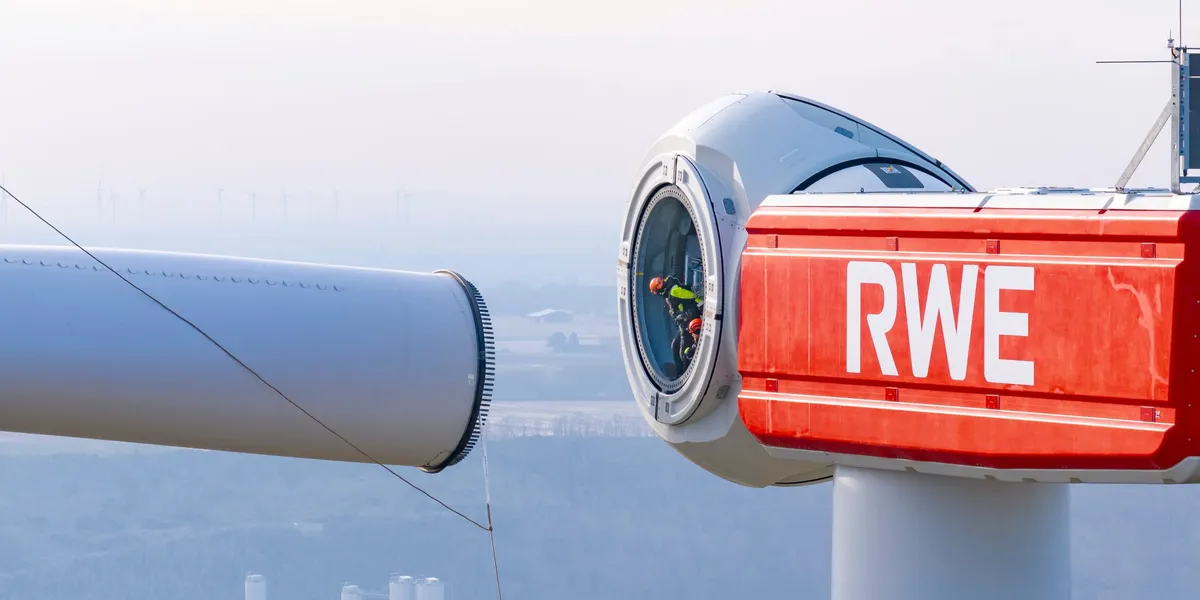Ask 100 people how U.S. farmland should be used for solar photovoltaic development, and you might get 100 different answers.
Advocates point out that solar is much more efficient than ethanol, which is the end-use for more than 40% of total U.S. corn production, eating up 30 million arable acres. It takes 31 acres of corn grown for ethanol, in fact, to produce the same energy as a single acre of solar panels. That’s a glaring statistic amidst unprecedented load growth. Plus, harvesting sunlight decreases pollution from fertilizer runoff and protects the land from erosion caused by annual tillage.
But that logic only goes so far, as every farmer considering letting someone plant panels on their land has unique interests. Some value every cent they can squeeze out of each square acre, while others are concerned with preservation or upholding family traditions. The American Farmland Trust asked hundreds of Virginian farmers for their thoughts last year and found nearly two-thirds think solar is best suited for less productive land.
“We need farmland,” one poll respondent replied. “How [else] are we going to feed ourselves in the future?
That narrative, in particular, is pervasive at a time of increasing food prices. It has been politicized in some state legislatures and by a federal government that seems more focused on fossil fuel production than pushing along utility-scale solar projects.
But who says the installation of a state-of-the-art solar PV system necessarily means the land is out of commission? Recent polling suggests most farmers are open to large-scale solar projects on their properties if they can still produce crops or raise livestock around the infrastructure —precisely how some developers are making inroads with the gatekeepers to transmission line rights-of-way.


Agrivoltaics, using land for both farming and solar energy generation, is a middle ground between the naysayers and the panel-pushers. The customized projects are becoming increasingly popular, and developers are getting creative with what they’re harvesting beyond photons.
“What used to involve just pilot projects for much of the industry is now part of how new plants are designed from the start. Dual-use is our expectation, not just an experiment,” Jesse Puckett, Enel North America’s director of sustainability projects and community affairs, told Factor This.
GO DEEPER: Listen to Harvesting sunlight: Agrivoltaics is winning over middle America, a Factor This podcast hosted by Paul Gerke featuring Ethan Winter of the American Farmland Trust, BlueWave Energy’s Jesse Robertson-Dubois, and Ed Baptista of Doral Renewables.
Hives for Heroes
Enel North America has quite an appetite for dual-use projects, which makes sense, considering how many mouths (much less stomachs) the company is now feeding. Last summer, the clean energy company announced a partnership with Texas Solar Sheep Company to deploy more than 6,000 sheep across eight Texas solar sites as part of the largest known solar grazing agreement executed in the United States. Since then, Enel has grown its flock to more than 13,000.
“We’ve seen a real shift in how people think about solar projects. There’s growing interest in making these sites multifunctional, producing clean energy while supporting local agriculture, biodiversity, and education. This allows us to produce successful projects that also have a positive impact on the local community and organizations that we partner with,” Puckett explained. Enel has been implementing dual-use solar since its pioneering Aurora project in Minnesota, which started operations in 2017.


Now, the company has moved on to doing more than what one might consider standard practice agrivoltaics stuff- next-level applications like its partnership with Hives for Heroes, a service organization that provides veterans with training and access to start beekeeping.
At two of Enel’s solar projects in Texas, a space is reserved for apiaries, which are cared for by local veteran beekeepers and serve as a training site for mentees in the program. What started with a single hive in Houston has grown into the largest beekeeping network in the United States, uniting over 10,000 members and managing more than 100,000 hives across all 50 states.
“For us, this partnership exemplifies how renewable energy projects can give back in more ways than one,” Puckett detailed to Factor This. “We strongly believe in supporting veterans and first responders. This program helps these heroes find connection and purpose, while also supporting the land we operate on. It’s a simple way to make our sites work harder for both people and the environment.”
“Working with Hives for Heroes was a no-brainer,” he added. “Allowing them access to our sites provides them with space to work with no operational burden to us.”








Hives for Heroes’ stated mission is to create purpose, connection, and community for those who served, while protecting pollinators and promoting sustainability. The group’s ethos fits well with Enel, as does its close connection to fluttering friends of flowers.
“Bees are a natural fit for solar sites – they thrive in open, sunny areas and play a big role in supporting local ecosystems. By planting custom vegetation mixes tailored to each project, we can create forage and shelter opportunities that benefit both bees and the broader ecosystem,” said Puckett.
Every jar of honey harvested is sweet, sticky proof of how solar generation and farming practices can co-exist.
“Most landowners and communities really like the idea that a solar site doesn’t take land completely out of agricultural or ecological use, but rather gives it a new one,” Enel’s Puckett confirmed. “Farmers—who recognize the importance of pollination—see opportunities for added income and land stewardship, and utilities see the benefits coming from projects that fit naturally into the local landscape and support the local community.”
Hornet Solar’s Sheep
The folks at Enel aren’t the only ones deploying livestock to feast on the green stuff growing around solar panels.
At Hornet Solar in Swisher County, Texas, developed by Vesper Energy, more than 2,000 sheep are grazing and maintaining the land by naturally controlling vegetation. Hornet Solar is one of the largest single-phase solar projects in the United States, spanning over six square miles and utilizing more than 1.36 million solar panels on a single-axis tracking system.
“Hornet is a very desirable location for implementing agrivoltaics in the form of sheep production,” explained Rick Knauth, Vesper’s VP and head of asset management and market analytics. “The environmental conditions and soil type are well-suited to providing year-round grazing, and the quality of the forage will support a healthy, vigorous sheep flock.”










Here are some of the specifics of the livestock-ing going on at Hornet:
- There are 2,275 ewes on site and 244 lambs.
- Rams were delivered in the first part of October for the fall breeding season, which started on October 1. Rams were at Hornet this spring, and as a result, 550 of them will begin lambing the second week of October.
- There are 11 guard dogs on site, a mix of breeds including Great Pyrenees, Anatolian Shepherd, and Akbash, all born and bred to protect sheep. Buck is the alpha male; Hornet and Vesper are the two newest dogs to join the team.
“Hornet has many weeds left over from years of tilling the land for row crop farming. The sheep target these weeds and thrive on them. As the site matures, the sheep will not only be a tool for managing vegetation but also for restoring this site to a native grassland prairie,” predicted Knauth.




Learnings and Recommendations
Adding animals to a utility-scale solar project isn’t a silver bullet solution for vegetation management, though. Earlier this year, Hornet received significant rainfall that fueled vegetation growth beyond the sheep flock’s ability to suppress it. The shade effect of the solar modules compounded the issue by sustaining soil moisture and promoting an ideal environment for both desirable and undesirable plants.
“We’ll continue to adapt our grazing practices to meet the site’s needs, and we view the sheep as a long-term solution for balancing vegetation management as the site matures,” assessed Vesper’s Knauth.
Like Enel, Vesper continues to evaluate opportunities to implement agrivoltaics at other projects, as they fit. Weather variability, as learned, has an impact, as do a variety of other factors.
“Agrivoltaic and ecovoltaic practices are very context-dependent,” Enel’s Pucket confirmed. “Every project has its own considerations, such as cost, topography, operational considerations, climate, and more. There’s no single formula for success, but it’s especially helpful when you can work in tandem with a partner.”
And those partners, whether farmers, flying, or four-legged, are getting easier and easier to find.







